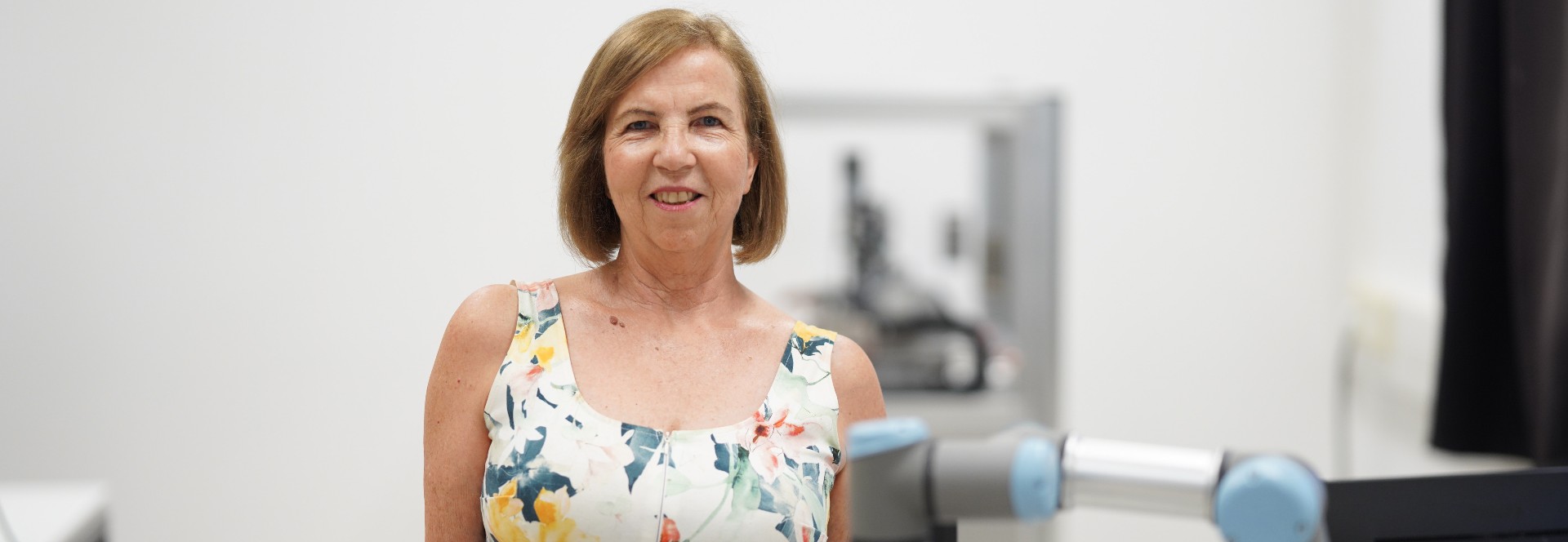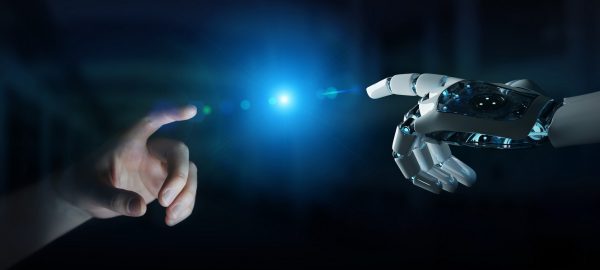
Miriam
Zacksenhouse
-
DK, 309
Head of Brain-Computer Interfaces for Rehabilitation and Sensory-Motor Integration Labs
Education
- 1977 – B.Sc., in Mathematics and Physics, The Hebrew University of Jerusalem, Israel
- 1980 – B.Sc., in Mechanical Engineering, Technion – I.I.T.
- 1982 – M.Sc., in Mechanical Engineering, Massachusetts Institute of Technology, Cambridge, Mass. USA
- 1993 – Ph.D., in Electrical & Computer Engineering, Rice University, Houston, Texas USA
Research Interests
- Machine Learning for Robotic Control, (Reinforcement learning, Impedance control, Robotic assembly, Walking robots).
- Brain Computer Interfaces (BCIs) (EEG-based BCIs, Invasive BCIs, Signal processing of neural data, Neural correlated of errors).
- Computational Motor control
- Biologically inspired control of dynamic walking bipedal robots
- Central Pattern Generators (CPGs)
Guest Appointments
- Visiting research scientist, Center for Neuro-engineering, Dept of Biomedical Engineering, Duke University, Durham, USA. (2003-2004).
- Postdoctoral research associate, Center for Higher Brain Functions, Weizmann Institute of Science (1994-1995)
- Postdoctoral research associate, department of Electrical & Computer Engineering, Rice University, Houston, TX (1993-1994)
Industrial Experience
- Principal Engineer and project leader, Artificial Intelligence branch, Lockheed Engineering and Science Company, Houston, TX (1987-1993)
- Engineer and project leader, NL – Industries/Technology Systems, Houston, TX (1982-1986)
Public Professional Activities
- Principal investigator of The Sensory-Motor Integration Laboratory
- Principal co-investigator of The brain-computer interfaces for rehabilitation
Honors and Awards
- Research Award from the Miriam and Aaron Gutwirth Science – based Industries Center, Technion (2000)
- Annie and Charles Corrin Academic Lectureship Award, Technion (1997)
- Samuel and Esther August Academic Lectureship (1996)
Selected Publications
- Wallace, D.M., M. Benyamini, M., M. S. Wilsey, P. G. Patil, C. A. Chestek and M. Zacksenhouse, Error detection and correction in intracortical brain-computer interfaces controlling two finger groups, J. of Neural Engineering, 20(4) 046037, 2023.
- Kozlovsky, S., E. Newman, and M. Zacksenhouse, Reinforcement Learning of Impedance Policies for Peg-in-Hole Tasks: Role of Asymmetric Matrices. IEEE Robotics and Automation Letters, 7(4), 10898-10905, 2022.
- Spector O. and M. Zacksenhouse, Learning Contact-Rich Skills Using Residual Admittance Policy. IROS 2021 (IEEE/RSJ Int. Conf. on Intelligent Robots and Systems), Virtual Conf., Sep. 2021.
- Benyamini M., I. Demchenko and M. Zacksenhouse, Error related EEG potentials evoked by visuo-motor rotations. Brain Research, 1769: 147606, 2021.
- Schallheim I. and M. Zacksenhouse, Policy gradient optimization of controllers for natural dynamic mono-pedal gait. Bioinspiration & Biomimetics, 15(3): 036010. https://doi.org/10.1088/1748-3190/ab782a, 2020.
- Gindin I., M. Benyamini, and M. Zacksenhouse, Effects of model inaccuracies on reaching movements with intermittent control, PLoS-ONE 14(10): e0224265; https://doi.org/10.1371/journal.pone.0224265, Oct. 2019.
- Sidorov E. and M. Zacksenhouse, Lyapunov based estimation of the Basin of Attraction of Poincar’e maps with applications to limit cycle walking. Nonlinear Analysis: Hybrid Systems, 33: 179-194, 2019.
- Hartston R., R. Yakar, R. Katz and M. Zacksenhouse, Implementation of a Natural Dynamic Controller on an Under-actuated Compass-Biped Robot, In 2019 IEEE/RSJ Int. Conf. Intelligent Robots and Systems (IROS), pp:2273-2278, IEEE, Macau, China, Nov. 2019.
- Buki E., R. Katz, M. Zacksenhouse, and I. Schlesinger, Vib-bracelet: a passive absorber for attenuating forearm tremor. Medical & Biological Engineering & Computing, 4:1-8, 2017.
- Demchenko, I., R. Katz, H. Pratt, and M. Zacksenhouse, Distinct electroencephalographic responses to disturbances and distractors during continuous reaching movements. Brain Research, 1652, 178-187, 2016.
- Spitz J., A. Evstrachin, and M. Zacksenhouse, Minimal feedback to a rhythm generator improves the robustness to slope variations of a compass biped, Bioinspiration & Biomimetics, 10(5) 056005, 2015.
- Benyamini M. and M. Zacksenhouse, Optimal feedback control successfully explains changes in neural modulations during experiments with brain-machine interfaces, Frontiers in Systems Neuroscience, 9:71, http://dx.doi.org/10.3389/fnsys.2015.00071, 2015.
- Spitz J., E. Sidorov, and M. Zacksenhouse, Humanoids can take advantage of crab-walking gaits, Int. J. Humanoid Robots 12(1), 1550004:1-23, DOI: 10.1142/S0219843615500048, 2015.
- Machine Learning for Robotic Control
- Invasive Brain Machine Interfaces (BMIs)
- Non-invasive Brain Computer Interfaces (BCIs)
- Computational Motor control
- Neural oscillators and control of rhythmic movements
- Biologically inspired control of dynamic walking of bipedal robots
- Central Pattern Generators (CPGs)
Are you interested in learning the profession of the future?
Faculty of Mechanical Engineering, Technion - Israel Institute of Technology, Haifa
"*" indicates required fields





